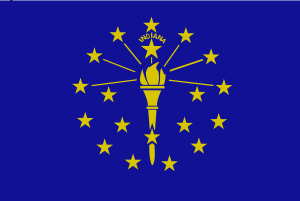“Lucky to Be Alive”: Snapchat Filter Causes Car Accident
Eighteen-year-old Christal McGee of Atlanta, Georgia, had pushed her father’s Mercedes to 113 miles per hour before she hit Uber driver Wentworth Maynard. Her reason? A Snapchat filter, according to USA Today. Snapchat is a social media app in which users can send videos or pictures that last for only a few seconds before disappearing […]

December 6, 2016
 Eighteen-year-old Christal McGee of Atlanta, Georgia, had pushed her father’s Mercedes to 113 miles per hour before she hit Uber driver Wentworth Maynard. Her reason? A Snapchat filter, according to USA Today.
Eighteen-year-old Christal McGee of Atlanta, Georgia, had pushed her father’s Mercedes to 113 miles per hour before she hit Uber driver Wentworth Maynard. Her reason? A Snapchat filter, according to USA Today.
Snapchat is a social media app in which users can send videos or pictures that last for only a few seconds before disappearing forever. The app also provides filters that change a user’s voice or appearance. One filter shows how many miles per hour a person is going when the snap is taken. That was the filter McGee was using when she hit Maynard. She was trying to get the filter to say, “100 mph.”
She didn’t get her Snapchat filter to prove her speed. Instead, she got into a car accident and inflicted severe injuries on Maynard, who suffered a traumatic brain injury and was hospitalized for months. The snap she did send? One from the ambulance, with blood running down her face and this caption: “Lucky to be alive.”
What If It Had Happened in Indiana?
 Wentworth and his wife are not only suing McGee, but also Snapchat for negligence. The suit alleges that Snapchat was as equally responsible for the accident as McGee because the company did not delete the miles-per-hour filter from the app after it was cited in similar accidents prior to this one.
Wentworth and his wife are not only suing McGee, but also Snapchat for negligence. The suit alleges that Snapchat was as equally responsible for the accident as McGee because the company did not delete the miles-per-hour filter from the app after it was cited in similar accidents prior to this one.
The McGee/Maynard crash happened in Georgia, but if it had happened in Indiana, it would have been handled similarly:
- Both Indiana and Georgia are fault states in which injured drivers like Wentworth are not forced to turn to their own insurance companies for compensation; they have the option of taking action against the other driver (in this scenario, McGee) and the other driver’s insurance company.
- In addition to recognizing the financial loss caused to the plaintiff (Maynard), both Indiana and Georgia law would also consider future medical bills and lost earnings. An individual injured in an accident can ask for compensation for “pain and suffering” as well, including physical pain and emotional injury (e.g. fear, anxiety, shock, or social dysfunction resulting from the accident).
- In Indiana and Georgia, it is possible for both drivers involved in an accident to be judged to each be partially at fault. This “comparative fault” concept means that if Maynard had done anything to even partially cause the accident (exceeding the speed limit, driving without a seat belt, etc.), that could lower the amount of compensation he would receive.
Who Is at Fault?
When it appears that a manufacturer has failed to take ongoing responsibility for warning consumers about risks posed by their product (including those which become known after the product is already in use), plaintiffs may file legal claims for injuries caused by product defects or risks. The suit against Snapchat is based on claims that the company knowingly hid the dangers of their speed filter even after the app was cited in accidents before the McGee/Maynard crash. However, Snapchat says it uses an in-app warning message to discourage people from using the speed filter while driving.
“If the case reaches a jury,” The Atlanta Journal-Constitution wrote this May, “the courts will have to sort out the line between personal responsibility and corporate responsibility, which is always an edgy topic.”
Certainly, both McGee and Maynard are “lucky to be alive.” But will the Snapchat miles-per-hour survive much longer?